Our Reputation is Built on An Education that Lasts A Lifetime
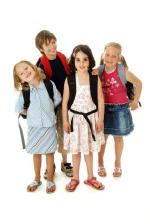
The Gagie School provides learning experiences where children make discoveries about both their surrounds and themselves. Small class size supports academic excellence allowing each student to grow and develop at their own pace. Mastering fundamental skills serves as the foundation for lifelong learning. Going beyond mastering the facts, the Gagie School produces avid readers, curious learners, and independent thinkers.
The School exists for the child; it embraces the individuality and is committed to unlocking the gifts that each child possesses in mind, body, and spirit.
The Gagie School Curriculum is perfect for emphasis on the whole child and the individual. Our teachers fit the appropriate level of work to each child and according to each child's learning style. Our goal is to provide a very strong, basic educational
foundation that will help each child discover and achieve his/her potential. In developing the whole child attention to detail and responsibility are also key factors.
The School exists for the child; it embraces the individuality and is committed to unlocking the gifts that each child possesses in mind, body, and spirit.
The Gagie School Curriculum is perfect for emphasis on the whole child and the individual. Our teachers fit the appropriate level of work to each child and according to each child's learning style. Our goal is to provide a very strong, basic educational
foundation that will help each child discover and achieve his/her potential. In developing the whole child attention to detail and responsibility are also key factors.
Mathematics

Mathematics as well as reading, is of primary importance in our curriculum. It is a hierarchy of skills that must be taught in sequential order, each building on the other. The Wisconsin Plan provides for those skills. Students work toward mastery before new skills are presented. The child's ability to perform the skills dictates placement level for reading and mathematic groups, not age or grade placement.
Reading
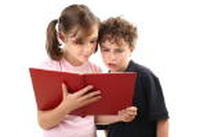
Reading is the most crucial of the fundamental skills. A learner's success or failure in school and society depends in large part on a person’s ability to read. Therefore, reading instruction must be of the highest quality.
The use of the Wisconsin Plan facilitates the systematic teaching of reading skills to all of our learners. We take a Language Experience approach. Reading is a group of skills that extends in a hierarchy from the simple to the complex. The Wisconsin Plan carefully sets down these skills making use of both auditory and visual channels. A sequential experience method, library books and basal readers are used to teach the skills. A great deal of attention is also given to the affective domain of the reader. This means we try to find reading materials that match the interests of the child; it also means we give definite time for pleasure reading each day. Children find a positive, pleasurable, useful way to use the skills taught during reading period. We want
children to become efficient readers who loves to read; and become voracious readers as they mature.
The use of the Wisconsin Plan facilitates the systematic teaching of reading skills to all of our learners. We take a Language Experience approach. Reading is a group of skills that extends in a hierarchy from the simple to the complex. The Wisconsin Plan carefully sets down these skills making use of both auditory and visual channels. A sequential experience method, library books and basal readers are used to teach the skills. A great deal of attention is also given to the affective domain of the reader. This means we try to find reading materials that match the interests of the child; it also means we give definite time for pleasure reading each day. Children find a positive, pleasurable, useful way to use the skills taught during reading period. We want
children to become efficient readers who loves to read; and become voracious readers as they mature.
Language Arts
All students are instructed in writing skills, sometimes termed Language Arts. In the early grades, creative writing and keeping a journal are part of this subject area. In the middle school grades the students investigate and participate in varied forms of writing; they also study grammar and sentence diagramming. It is important for children to write every day so that writing becomes second nature to them.
Science
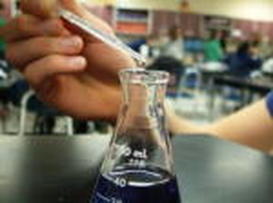
Science is an integral facet of each grade's curriculum. By focusing on the prevalence of science in our daily lives we enable the children to explore this very expansive subject. Hands on materials help develop and foster a more lasting understanding. With the fast pace of science today, it is necessary to cover the basics of physics, chemistry, biology, and botany. A solid working practice of the scientific method and an understanding that it is highly beneficial leads to observing and questioning all/everything. Giving them a mental toolbox should pay dividends the rest of their lives. Participating in our Science Fair, the Invention Convention and the ExploraVision Program give opportunities to use the classroom knowledge and compete for honors in science. Our greenhouse, garden, science lab and kitchen provide places for practicing hands on science.
Social Studies

Social Studies with emphasis on Geography is taught at all grade levels. An understanding of history, civics, government, economics and sociology make our students better citizens. Learning about democracy and what our fore-fathers envisioned for our country teaches students an appreciation of the privileges and responsibilities of living in a democracy. Using an atlas and drawing maps are important visual tools to better understand the inter-connected world we live in. Gagie School students get hands-on training; with field trips to Michigan's Upper Peninsula, the Capitol Building and museums in Lansing, Michigan, and Washington D.C.
Technology

Technology spans all areas of the curriculum. Gagie School believes the computer is a tool for learning in all subjects. Students use the computer in all subject areas to create reports or multimedia presentations. Creating Websites and Documentaries for National History Day requires vast knowledge if winning State and National Recognition is achieved.
Library
In addition to pleasure reading books, our library is an important source of research material. Gagie students learn how to use books for research, how libraries are arranged, and about the Dewey Decimal system. They learn the importance and difference between primary vs secondary sources in research. During National History Day competition, many students visit the Zhang Legacy Collections Center, on the campus of WMU, to get primary sources for their projects. There is nothing like holding a book in your hand!
Sports & Fitness
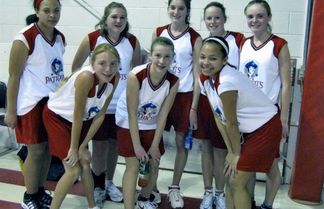
Running. Jumping. Climbing. Throwing. Catching. Balancing. Fun? Of course. But
they're also developing self-esteem. It's all about teamwork and cooperation. Physical
education activities center around building strength, flexibility, and endurance, and
promoting healthy lives that translate into a lifetime of physical activity. Younger children play in an environment focused on developing gross motor coordination, endurance, strength, and fitness. Upper grades learn specific skills to use in game situations where strategies, teamwork, and sportsmanship are emphasized. Our school actively participates with boys and girls volleyball, basketball, and other sports.
they're also developing self-esteem. It's all about teamwork and cooperation. Physical
education activities center around building strength, flexibility, and endurance, and
promoting healthy lives that translate into a lifetime of physical activity. Younger children play in an environment focused on developing gross motor coordination, endurance, strength, and fitness. Upper grades learn specific skills to use in game situations where strategies, teamwork, and sportsmanship are emphasized. Our school actively participates with boys and girls volleyball, basketball, and other sports.
Art
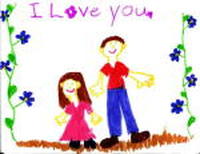
Walking into the art room immediately makes you want to grab a paintbrush and canvas. Students learn about topics such as pointillism, perspective drawing, Japanese paper marbling, and more. They look at the work of a wide range of styles and perspectives from Paleolithic cave art to contemporary printmaking, from Renaissance painter Michelangelo to comic book artist Scott McCloud. And most importantly, they
create such things as sculptures, paintings, cartoons, prints, books, and more. They love having the independence to create with their own ideas and develop their art. In addition, art projects frequently integrate with and reinforce classroom learning. For example, fourth graders studying Native American culture create small basket weavings. The prolific young artists' work flows from the art room to decorate the halls, the KIA, and the Kalamazoo Community.
create such things as sculptures, paintings, cartoons, prints, books, and more. They love having the independence to create with their own ideas and develop their art. In addition, art projects frequently integrate with and reinforce classroom learning. For example, fourth graders studying Native American culture create small basket weavings. The prolific young artists' work flows from the art room to decorate the halls, the KIA, and the Kalamazoo Community.
Music
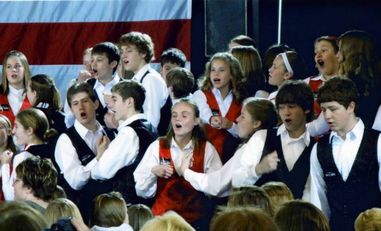
Music is well integrated into the curriculum at the Gagie School. We want our students to appreciate music and its effect on our society, have a general understanding of basic concepts, and develop an interest in being lifelong music lovers. Beginning in preschool, music is introduced through movement and singing songs. General music concepts such as melody, harmony, rhythm, form, note reading, history, style and movement permeate kindergarten through the eighth grade, though upper grades have more emphasis on choral music. In addition, our students frequently perform programs which include all styles of music from classical to jazz. Our annual Holiday Program, Dicken’s Christmas Carol, includes all students in K-8 and is a truly impressive display of musical
and theatrical talent! Instrumental music is available to students in grades 5-8. Testing for instrument aptitude happens in the spring prior to 5th grade and rental is arranged through a local music store. In 7th and 8th grades, students can participate in a Swing Choir called
Good Vibrations. Good Vibes has a wonderful history of community outreach and volunteerism. Kalamazoo has a rich and diverse musical community and The Gagie School takes advantage of the numerous musicians, both students and professionals, who are willing to share their talent and knowledge.
and theatrical talent! Instrumental music is available to students in grades 5-8. Testing for instrument aptitude happens in the spring prior to 5th grade and rental is arranged through a local music store. In 7th and 8th grades, students can participate in a Swing Choir called
Good Vibrations. Good Vibes has a wonderful history of community outreach and volunteerism. Kalamazoo has a rich and diverse musical community and The Gagie School takes advantage of the numerous musicians, both students and professionals, who are willing to share their talent and knowledge.
Spanish
Spanish conversation begins at the preschool level and continues through the eighth grade. Beginning with basic vocabulary practiced through songs, stories, and repetition of games. Our students begin their Spanish education with the tools necessary for realistic and practical conversations. Our program focuses on four key areas of development: listening comprehension, speaking, reading and writing. Our goal is for each of our students to speak true conversational Spanish. Our program reinforces fundamental Spanish vocabulary and creates simple conversations for students to practice in a classroom setting. These activities build our students' confidence with the
Spanish language and allow them to take on more complex and varied conversational topics. By the time students reach middle school, they are ready to become independent Spanish speakers. Middle school students begin to explore Hispanic geography and culture, and gain valuable real-world experience including ordering food in restaurant, getting directions while traveling, and exchanging stories with a friend. Our middle school students create, write and perform their own unique conversations to share with their peers. Students are regularly assessed through tests, quizzes and assignments, with focus on development as a Spanish speaker. By graduation, students
who complete Gagie's Spanish program will have the foundation necessary for continued Spanish language success in high school.
Spanish language and allow them to take on more complex and varied conversational topics. By the time students reach middle school, they are ready to become independent Spanish speakers. Middle school students begin to explore Hispanic geography and culture, and gain valuable real-world experience including ordering food in restaurant, getting directions while traveling, and exchanging stories with a friend. Our middle school students create, write and perform their own unique conversations to share with their peers. Students are regularly assessed through tests, quizzes and assignments, with focus on development as a Spanish speaker. By graduation, students
who complete Gagie's Spanish program will have the foundation necessary for continued Spanish language success in high school.

